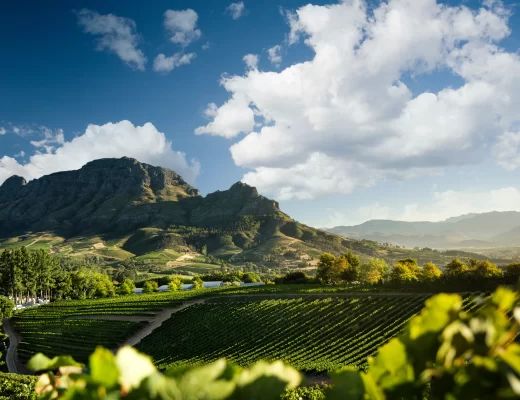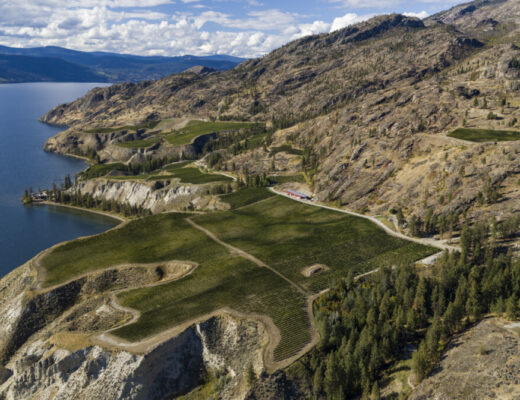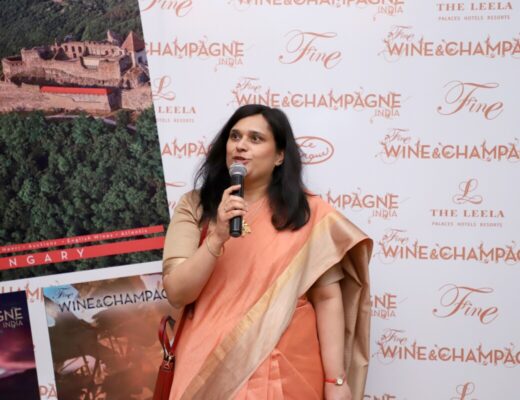David Adelsheim is the founder of Adelsheim Vineyard in Oregon’s Willamette Valley – and more specifically, the Chehalem Mountains’ first winery – which he founded in 1971 with his former wife, Ginny. Having had no formal training in viticulture, other than advice from Oregon’s other early vintners before purchasing his original 19-acre parcel in Yamhill County, the Adelsheim’s became part of the first ten families to make wine in the Willamette Valley before 1980.
As one of the original Oregon winemaking pioneers, Adelsheim continued to improve his efforts and those of other growers and winemakers in the state to regularly produce great wine. It eventually led to Oregon cementing its reputation as a source of world-class wine.
Read Also: Tawse on Tawse: How a love for Burgundy turned into an obsession with Niagara
Adelsheim’s early winemaking experience included work at the experimental winery of the Lycée Viticole in Beaune, France, and at The Eyrie Vineyard in Oregon. He was the first chairman of the Oregon Wine Board and has served as president of the Oregon Winegrowers Association. He was instrumental in getting Oregon State University to import clones from Burgundy and met with scientists in France and Germany to persuade them to share their clones with Oregon winemakers.
 Over the last five years, Adelsheim Vineyard has quietly entered a new era of leadership, artisanry, and vision. A series of transitions put new people in senior leadership positions as owner, president, winemaker, vineyard manager, and in sales and marketing. That team is envisioning a new future for the winery, which will forever go down as one of Oregon’s most historic and revered.
Over the last five years, Adelsheim Vineyard has quietly entered a new era of leadership, artisanry, and vision. A series of transitions put new people in senior leadership positions as owner, president, winemaker, vineyard manager, and in sales and marketing. That team is envisioning a new future for the winery, which will forever go down as one of Oregon’s most historic and revered.
In this third era of the winery, the Adelsheim brand will reference the collaboration and aspirations of its founding era (1971-2000) and incorporate the advances in vineyard management, winemaking, and marketing of its technical era (2000-2020) as it transforms itself into a visionary enterprise based on three main pillars:
The Chehalem Mountains
Fifty-one years ago, in 1971, David and his wife Ginny bought 19 acres on the south slope of the Chehalem Mountains. “We started planting grapes the next year and bonded the first winery in the Chehalem Mountains in 1978”, says Adelsheim. “I wrote the petition for the Chehalem Mountains American Viticultural Area (AVA) in 2002 and I now lead a research project to define the viticultural neighborhoods within that AVA.”
“I’m in a unique position to remind an audience about the attributes of the founding of our wine industry that led to its exceptional success in just fifty years.”
With their ownership of 70 hectares of vineyard land within that AVA, their winery has both a longer history and broader experience with its meso-climates and soils. “The Chehalem Mountains are our home, our source of grapes, and give specific definition to our wines of place,” he continues. “We are the Chehalem Mountains.”
Vineyards: estate and growers
From their first plantings in 1972, the focus has always been on maximizing the quality of the wines produced from their own estate vineyards. Today, the winery’s vineyard manager Kelli Gregory and her team continue the years of vineyard experiments to determine the best clones, root stocks and practices for each of their eight sites.
Adelsheim says: “Every vine was planted and nurtured to produce a specific wine. Yet we are also mindful of what our late owner, Jack Loacker, said in 2018: “We don’t yet own all the best vineyard sites in the Chehalem Mountains.” Thus, until we do, we will continue to purchase grapes from a few select growers within our AVA.”
Obviously, quality standards for purchased grapes must be as high as their own because, as Adelsheim says, “these purchased grapes are used to create spectacular single vineyard wines and expand the production of our Chehalem Mountains AVA wines.”
Chardonnay and pinot noir
Adelsheim Vineyard has produced wines from the chardonnay and pinot noir varieties for 44 years. Grown in their own vineyards, this legacy gives them the confidence to forge a new vision for their wines, synthesizing the highs of the founding era wines with the consistency of the technical era. “In this post-modern era, we will actively fight the effects of climate change in our vineyards (through continuing site selection, more sustainable practices and our own research) and in our winery (by picking earlier and letting those fresher grapes guide the winemaking practices.)”

“The new style of Willamette Valley chardonnay that has emerged over the last two decades has been heavily influenced by us,” says Adelsheim. “In the 1970s, I helped put in place an importation system that allowed the clones from Burgundy to come to Oregon. Our winery led the creation of the first winemaker Chardonnay Technical Tasting. That annual event has allowed the industry to quickly understand and adopt new practices, such as earlier picking.”
When it comes to the winery’s pinot noir, Adelsheim says “our winemaker Gina Hennen and her team are spearheading a new, more precise, less alcoholic style of pinot noir that looks to maximize the quality of wine from each vineyard block by earlier, more exact picking and by balancing winemaking techniques to what each block requires.”
“Single vineyard wines are more site specific–and higher quality–and the blends are fresher, less jammy, with much increased aging potential. The revolution has begun.”
The interview
I’ve been afforded the opportunity to meet David Adelsheim, in person, on two occasions – both times during Oregon wine tasting events where he visited Toronto on brand ambassador-style expeditions. After all, he’s the best person to speak about the wines that carry his name, even if he’s not as directly involved anymore.
During his most recent visit to Toronto this past spring, David and I arranged a Q and A and he was so gracious with his time and I can’t thank him enough for his very informed responses. Below is what we had a chance to talk about, followed by tasting notes of some of the wines I was given to sample:
VineRoutes: Regarding the decision for the winery to be sustainable – in your view, how do you think Oregon’s wine consumers are responding to the types of philosophies being practiced at Adelsheim? Is there still much to be learned at the consumer level?
David Adelsheim: Consumers of wine in Oregon, and everywhere else for that matter, are confused about sustainability and related claims and programs mentioned on wine labels… and everywhere else.
Why is that?
A big piece of the problem is there are so many programs. Lots of wine regions have their own programs. Almost no program is clearly marketed. But I submit an even bigger problem is that the various programs have very different–and even conflicting–goals. Organic (and Biodynamic) programs are mostly about what is sprayed on vines or added to the soil or to wine (if the wine is actually certified.) They are not really sustainability programs. The fact that more tractor passes are required, thus creating more CO2 and soil compaction, is not even factored in.
Those programs that try to address sustainability head-on often allow the use of chemicals forbidden under organic rules. The two types of programs really can’t be compared. And certainly not by someone trying to make a thoughtful choice of wine in a store.
The one program with any broad recognition–organic–appears to be the program that many wineries are moving toward. If there were a single way to recognize the most sustainable practices around the world, that would be an important step forward.
VineRoutes: Is there a particular wine region in the world that you’re inspired by? A region or winery that you’ve tried to mirror with your own work?
David Adelsheim: First, I have to say that, if one visits any wine region in the world with eyes open and mind engaged, one should find new ideas to try, and social/political solutions and specific wines that are inspiring. Fifty years ago, we were first inspired by Burgundy because the varieties we had planted originated there.
In 1974, I went to Burgundy for a “stage” at the Lycée Viticole in Beaune, thinking I would learn the secrets to producing great pinot noir and chardonnay wines. All the producers I met would happily tell me everything they did. But the one thing they couldn’t really describe, the actual secret, was what was Burgundy–the place. I came back then, as I continue to do after every trip to Burgundy I take, realizing that I–and all of us in the Willamette Valley–can admire the specific approach of a “vigneron” in Burgundy, but we will never make that person’s wine. We can be inspired but we cannot replicate.
VineRoutes: What’s the biggest challenge that you currently face as a founder of a winery in Oregon?
David Adelsheim: To answer the exact question you ask: I am the founder, but not the winemaker, not the CEO, not the owner. So, my biggest challenge since stepping back from those other jobs has been defining a role for myself that is both challenging and relevant. Within the winery itself, I have found two roles, in which I can make a unique contribution.
The first: Wine Exportation. I have kept–and have been allowed to keep–the role of finding new importers for our wines around the world and working with our importers to explain our wines and to sell them. This also involves work with political infrastructure around the promotion of export of Oregon and American wines.
The other role is Envisioning & History Straightening. Most of this is focused within our company, but helping the industry talk about its future is extremely important. And, of course, many people find it easier to make up history or impute reasons for something, rather than talking to those that were there at the beginning. Focusing more purely outside our winery (but very much within the Willamette Valley wine industry,) I am spearheading research into defining the viticultural neighborhoods within the Chehalem Mountains American Viticultural Area.
Another area of focus for me is initiating an annual winemaker technical meeting on pinot noir, in which we can discuss issues of style in a globally-warmed world, what aspects of our wines come from site and how are they best preserved. I am working with others in the northern Willamette Valley to create mapping that is both more accurate and more easily understood than earlier attempts.
Finally, I have the scars from trying to tighten the labeling regulations for wines from the Willamette Valley.
VR: What’s the best piece of career advice you’ve ever received?
DA: Gary Andrus (founder/winemaker of Pine Ridge Vineyards, Napa Valley, and Archery Summit, Dundee Hills) told me in the late 1990s to never give up the title of winemaker. In essence, what he was saying was that the owner must always have the final say in the winemaking process. That should not be delegated to a hired winemaker. It is only when the winery owner is able to provide an overarching vision for the winery, including for its wines, that the winery can emerge from the cacophony of the ocean of winery brands.
However, I did not follow his advice. I gave the title of winemaker to hired professionals and did not retain a role as “executive winemaker” for myself. I always hated supervising others and let the hired winemakers find their own direction with our wines. And thus, I suspect that our winery has always been known more for its industry leadership than for its transcendent wine quality.
VR: When you were making wine, did you view yourself as an artisan winemaker–do you want consumers to view your brand as artisanal?
DA: When I was truly the winemaker–from 1978 to 1987–the word “artisan” wouldn’t have been used for winemakers. Maybe “craftsman.” “Artisan” became a much more used for winemakers in this century as the attributes of luxury products were first the subject of research in France and then applied to certain wines.
Still, the word is used interchangeably with “high-quality,” “craftsmanship,” and “excellence.” The other implication of “artisanal” is smaller size. Larger wineries would never be called “artisanal” even if their wines were of the highest quality. We haven’t used “artisanal” to define our brand, though most observers would agree that it would apply.
I suspect we are more focused on our attachment to place–the Chehalem Mountains AVA–and to the role of our estate vineyards and the varieties chardonnay and pinot noir play in defining our wines and our brand.
VR: You’re one of the founding members of North Willamette, Oregon wine. Can you describe what this has meant to you?
DA: We would likely say, “one of the founders of the Willamette Valley wine industry.” It has lots of meanings, of course. First, it means I’m old. But the thing that is most meaningful to me right now is that I’m in a unique position to remind an audience about the attributes of the founding of our wine industry that led to its exceptional success in just fifty years. Those attributes derive, originally, from the two founders of our industry.
The role of David Lett in founding the Eyrie Vineyards (1965) and his role in pushing the industry in a certain direction has been well and often told. He had fallen in love with pinot noir at the University of California, Davis during the 1962/63 school year. He came to the Willamette Valley in 1965, armed with cuttings of pinot noir and other varieties, which he rooted in a nursery that spring. His focus was single mindedly on pinot noir. And on making the best possible wines from that variety.
He took a few of us, who followed, under his wing–I was his first cellar worker. But mostly he inspired us by his example. Creating a pinot noir wine that performed well at the 1979 Gaultet Millau Olympiades du Vin and at a rematch staged by Robert Drouhin the following year cemented the role of making great wine from pinot noir for all of us.
The role of Chuck Coury, who founded Charles Coury Vineyards in 1965, is far less understood. Chuck was a difficult person, but it was his master’s thesis from Davis that provided scientific climatic support for planting the grapes varieties of northern Europe in the Willamette Valley. He also saw the need to create industry organizations to effect political policy and research that could benefit the wine industry. Though he wasn’t particularly collaborative himself, he created the framework for collaboration, which still defines the Willamette Valley wine industry today. In 1978, Chuck filed for bankruptcy and the winery was sold soon after.
VR: Fifty years ago, you had a vision, and progress has been made over the decades. But what still needs to be done?
I know that on the winery website and elsewhere, marketing people have written that Ginny (my wife then) and I had a vision about creating stuff–great wines, perhaps. Maybe we had naïve fantasies, dreams, or imaginings about making wine on the property we purchased, but certainly nothing that provided any sort of roadmap. We could not possibly have known the direction our vineyard–and then winery–would take. Nor have understood how famous our Valley would become.
What needs to be done? I see three areas, where we have work to do:
- With the reality of global warming, our industry must figure out a way to continue to make pinot noir wines that reflect a cooler ripening climate. We need to find cooler vineyard sites, at higher elevations, and on northern expositions. We need research on rootstocks and techniques to delay ripening. And we need to demonstrate the advantages of earlier, more precise harvesting to continue to be relevant.
- We need to continually remind the industry about the advantages of industry collaboration, referencing our past collaborative successes and creating industry infrastructure to facilitate future collaboration on the most difficult challenges.
- We must figure out a way to incentivize the investment of small, local, and independent growers and wine producers in the Willamette Valley. We cannot allow larger companies from out-of-state and from other countries to dominate our industry, making the Willamette Valley into a wine colony of, say, California or France.
The large majority of our growers and winery owners must be able to say, “In the Willamette Valley, we grow the best grapes and make the best wines in the world.” (Whether the person saying that actually believes it isn’t the point. An owner in California or France can never say that.)
 Adelsheim 2019 ‘Willamette Valley’ Chardonnay
Adelsheim 2019 ‘Willamette Valley’ Chardonnay
Made using sustainably grown grapes in the north Willamette Valley, this chardonnay is expressive, with its honeyed apple flavours, citrus and tingly spiced notes. The wine’s acidity provides backbone, verve and is sharp as a knife – making this wine a great choice to pair with a variety of dishes. ($45)
 Adelsheim 2019 ‘Willamette Valley’ Pinot Noir
Adelsheim 2019 ‘Willamette Valley’ Pinot Noir
Pulled from multiple vineyards throughout the northern Willamette Valley, this wine showcases the extraordinary depth and complexity that can be found in this particular Oregon wine region. The wine is flavourfully lush, with red cherries and delicate baking spices on the nose, along with hints of lavender and minerality. Bursting on the palate, the texture is fresh and supple with smooth tannins leading into an excellent finish. ($45)
 Adelsheim 2019 ‘Boulder Bluff Vineyard’ Pinot Noir
Adelsheim 2019 ‘Boulder Bluff Vineyard’ Pinot Noir
Fruit for this single vineyard wine comes from the winery’s certified Boulder Bluff estate vineyard which was planted in 2003 on volcanic soil, and used some common Willamette Valley clones (777, Pommard) as well as some heritage plant material. The plant material is sourced from cuttings of the very first block of pinot noir David Adelsheim planted in 1974. Velvety soft with lovely raspberry and spice notes, the wine is has that certain mineral acidity that can only come from volcanic soils. Should age gracefully over the next five to seven years. ($75)

Adelsheim 2019 ‘Ribbon Springs’ Pinot Noir
From the winery’s largest estate vineyard that contains just pinot noir and chardonnay grapes, this single vineyard expression of pinot noir is fresh and lively on both the nose and palate, with cherry, currant and spice notes coming through nicely. ($75)
![]()













